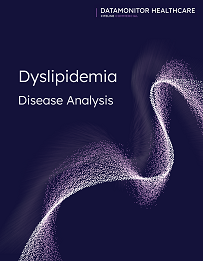Report Library
All Reports
Datamonitor Healthcare CV&Met Disease Analysis: Dyslipidemia
October 31, 2025
The dyslipidemia market is well established, and the branded segment has seen declining sales due to generics. However, a number of novel drugs are poised to spur growth, though this will depend on a variety of payer and physician factors.
Esperion’s oral Nexletol and its fixed-dose combination (FDC) with ezetimibe, Nexlizet, approved in 2020 in the US and Europe, have had only meager uptake. Issues have included modest LDL-C lowering for Nexletol (particularly on top of statins), lack of cardiovascular outcomes trial (CVOT) data for physicians and payers, pior authorization (PA) (despite a system to help providers), marketing strategy, and launch issues during the COVID-19 pandemic. In what the company hopes to be an inflection point, in March 2023, data released from its CVOT in statin-intolerant patients were positive, though the magnitude of benefit for the primary endpoint was modest, and the company has since gone on to pursue a label expansion, submitting a supplemental New Drug Application (sNDA) to the FDA in June 2023 seeking to add the use of both for CV risk reduction as well as removing the statin limitation in the LDL-C indication. Enthusiasm may be tempered somewhat by the modest effects, but proponents may be able to point to the additional treatments received by the placebo group that lowered their LDL-C during the trial, likely narrowing the CV benefit, and highlight the improved effects that would be anticipated with Nexlizet. The company will also be targeting physicians with profiles most likely to react positively to the data, as determined by its market research. The franchise could be particularly useful in statin-intolerant patients, with the unique CVOT bolstering use in that segment, though one drawback is that commentators have said it is still unclear how much CV benefit there may be on top of statins. More real-world data are also needed on Nexlizet’s LDL-C lowering, given trial issues. Still, the oral route could lead them to be preferred initially in patients failing statins +/- ezetimibe, especially those not as far from goal, and among primary care physicians, depending on the patient risk and whether the physician feels that reaching certain LDL-C targets is acceptable rather than driving it as low as possible. In the US, in addition to expanding its label beyond atherosclerotic CV disease and heterozygous familial hypercholesterolemia (HeFH) to other primary prevention, the company expects the CVOT will increase Medicare coverage and ease PA. It eventually will face competition, however, from the more efficacious enlicitide decanoate.
This Datamonitor Healthcare report contains a Disease Analysis module.
| Indications Covered: |
Dyslipidemia / Hypercholesterolemia
Familial Chylomicronemia Syndrome (FCS)/Lipoprotein Lipase Deficiency (LPLD) Familial Partial Lipodystrophy (FPL) |
